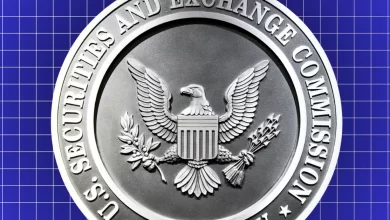How Low Can Bitcoin Price Drop? Analysts Sound Alarm as Market Panic Grows
-
 BTC $ 83,617.57 (2.99%)
BTC $ 83,617.57 (2.99%)

Bitcoin has fallen below key support levels, with potential for further drops to $75,000 or even $70,000.
Institutional demand is declining, evidenced by record ETF outflows, and overall market sentiment is extremely fearful.
Upcoming U.S. inflation reports and geopolitical tensions, such as trade tariffs, are adding further pressure and uncertainty.
Bitcoin has had a tough start to the week, struggling to stay above $80,000 on March 10. After weeks of wild swings, the market is once again on edge. BitMEX co-founder Arthur Hayes warns that BTC could soon test $78,000, and if that level fails, $75,000 could be next. But the real concern? A massive cluster of Bitcoin options between $70,000 and $75,000 could trigger a surge in volatility, potentially leading to a deeper sell-off.
With billions wiped out in liquidations and institutional investors pulling back, fear is creeping into the market.
Let’s break down what’s happening and what could be next for Bitcoin.
$5 Billion in Long Positions Wiped Out
The recent market crash has already erased over $5 billion in bullish bets, mostly from long positions, in just four days. Bitcoin is now down nearly 30% from its January highs, and traders are concerned as it has fallen below the 200-day moving average—a key signal that often indicates further losses.
Many had hoped the BTC Strategic Reserve, a new initiative, would restore confidence, but it hasn’t had much impact. At the same time, institutional investors are pulling money out of Bitcoin ETFs at record levels, suggesting that demand from big players is fading.
Panic Selling Takes Over
According to 10x Research, this price drop is a “textbook correction,” meaning it’s a normal pullback after a major rally. Analysts noted that 70% of sellers are recent investors who bought Bitcoin in the past three months and are now panic-selling.
Investor confidence is also falling, with the Bitcoin Fear & Greed Index dropping to extreme fear at a reading of 20. Meanwhile, trading volume has declined, meaning fewer people are buying Bitcoin at current prices. Adding to concerns, El Salvador—one of Bitcoin’s biggest supporters—has reportedly paused its Bitcoin-related projects, further weakening market sentiment.
Brace for Upcoming Events
Bitcoin’s volatility is likely to continue this week, as two key U.S. inflation reports are due. If inflation remains high, the Federal Reserve may stick to its restrictive monetary policy, putting more pressure on risk assets like Bitcoin.
On the global front, Canada has introduced retaliatory measures in response to recent U.S. trade tariffs, adding to market uncertainty.
Will Bitcoin Hold $80K or Drop to $70K?
Crypto analyst Jacob King highlights Bitcoin’s sharp drop below $80,000, which led to over $5 billion in liquidations within four days. BTC is now down nearly 30% from its January highs and has fallen below the 200-day moving average, a bearish signal.
Despite expectations that the BTC Strategic Reserve would support prices, institutional interest continues to fade, as seen in record ETF outflows. Now, the key question is whether Bitcoin can hold the $80,000 support level. If prices stabilize, a recovery could follow, but if BTC breaks below key support, a drop toward $70,000 is possible.
With institutional demand weakening, liquidations rising, and global uncertainty increasing, traders are preparing for more volatility in the days ahead.
Never Miss a Beat in the Crypto World!
Stay ahead with breaking news, expert analysis, and real-time updates on the latest trends in Bitcoin, altcoins, DeFi, NFTs, and more.
FAQs
BTC is falling due to ETF outflows, weak investor sentiment, and inflation fears. Breaking key support levels may trigger further declines.
Recovery depends on BTC holding support at $80K. If sentiment improves and institutional demand returns, BTC could rebound from recent lows.
The BTC Strategic Reserve aimed to boost confidence, but a lack of funding and institutional skepticism have failed to drive bullish momentum.







